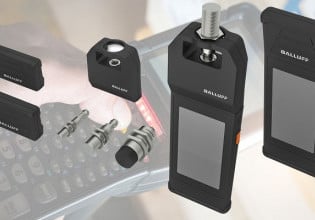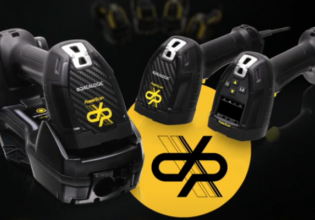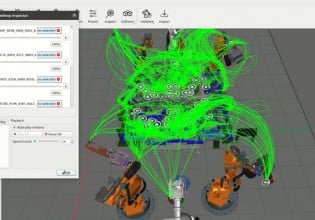How IIoT can Benefit Maintenance Practices and Increase Overall Equipment Effectiveness
As data becomes available, maintenance can shift from being done on a rigid schedule to a more cost-effective plan of fixing as required, even turning attention to the root cause of maintenance woes.
What Is Overall Equipment Effectiveness (OEE)?
OEE is a critical key performance indicator of how well equipment or plant assets are being utilized compared to their theoretical maximum capability. It is a percentage ranging from 0% to 100%, with the high-end value indicating perfect equipment utilization. The metric is the product of availability, performance, and quality. Availability is the uptime the equipment delivers when scheduled to run production (time). Performance is the actual or real cycle time of the equipment (speed). Lastly, quality is the yield of the equipment (good products produced).

Figure 1. Calculations to derive availability, performance, and quality.
OEE in Maintenance
Equipment maintenance is vital since it can increase operational efficiency, reduce repair and maintenance costs, and improve profitability. Any unplanned downtime that results in the loss of productive manufacturing time will affect the availability of the equipment. Therefore, proactive maintenance to prevent unscheduled downtime events provides value to OEE and the company's bottom-line profitability. The challenge companies face isn’t in calculating the OEE metric. Rather, it’s in robust data acquisition for proactive maintenance methods to prevent failures where the challenge lies.
What Is Preventative Maintenance?
Preventative maintenance is the most common form of proactive maintenance. Maintenance is scheduled on a frequency that does not account for historical failure trends or the current condition of the equipment. Therefore, the cost of labor and materials are the greatest, but the costs associated with building out the program are lower.
This form of maintenance does not require IIoT solutions and, thus, has existed on plant floors for a very long time. An example of preventative maintenance could be the monthly maintenance of high-wear components of a plastic injection mold or the regular oil change on a vehicle engine.
What Is Predictive Maintenance?
Predictive maintenance is the most value-added form of proactive maintenance where companies can extract value from IIoT. It relies on historical data to make future predictions of when a failure is likely to occur, minimizing ongoing costs since good parts are not constantly replaced.
The caveat with this form of maintenance is it requires resources, time, and skilled operations technology professionals to implement. Sensors, edge computing gateways, IIoT applications, and backend databases must be installed and configured to capture and store the data at the foundational level. A machine learning algorithm rests on this foundation and utilizes the captured data to make predictions of future failure events. The action taken in response to this prediction relies on a human decision in predictive maintenance. Therefore, there is a higher cost to implement but a benefit in reducing unnecessary maintenance.
Continuing the example of the plastic injection mold, the predictive maintenance model could predict mold failure in two months. Based on this knowledge, technicians could perform maintenance on high-wear components on a two-month cadence instead of the former one-month cadence. This form of maintenance is where many companies are embarking on their Industry 4.0 journey.

Figure 2. Workers may evaluate robot points of failure per a preventative maintenance program. Image used courtesy of Adobe Stock
What Is Prescriptive Maintenance?
Prescriptive maintenance is the most advanced form of proactive maintenance and is on the cutting edge of technology. It differs from predictive maintenance because the system can also recommend possible root causes of the predicted equipment failure. Technicians and engineers can then act on the recommendations to prevent equipment failure.
The human decision element is significantly removed from these systems, as deep learning algorithms make critical decisions. A prescriptive maintenance system could predict our former plastic injection mold to fail in the same two-month time as the predictive system. However, based on past failure classifications, the algorithm could recommend that the most likely cause be the ejector system seizure. Technicians could then perform targeted maintenance on the ejector system without performing maintenance on other components that are not required.
Basic IIoT Architecture for Predictive Maintenance
The adage “easier said than done” applies to IIoT systems. The breadth of technical skills required and collaboration between different teams within a company is challenging. A simple IIoT system is usually composed of the following elements:
Sensors
There are endless possibilities for sensor applications. Some examples are temperature, humidity, and vibration sensors. Sensors can either be analog 4-20 mA signals, digital boolean signals, or even more advanced protocols such as IO-Link.
Edge Device
A computer such as Raspberry Pi, Arduino, or PLC with limited computational power can serve as a gateway to the corporate network. The capabilities of even the simplest modern computers, paired with reducing costs, are rapidly advancing computer modules.
Communication Protocol
Modbus, OPC-UA, and MQTT are examples of protocols used in IIoT to communicate between machines and with edge/cloud gateways.
SCADA / MES Server
Ignition, Open Automation Software, and Adroit Ignite are examples.
Relational Database
A relational database serves as a central collection point for relevant data to be logged, scanned for trends, or shared with other applications. Examples include PostgreSQL, MS SQL Server, and Oracle MySQL.

Figure 3. Basic architecture diagram of an IIoT system used to capture data for preventative maintenance. Image supplied by author
Transitioning from Preventive to Predictive Maintenance
Many companies are presently utilizing the preventative maintenance model and are just beginning to explore the capability that IIoT can offer maintenance programs. In transitioning to a predictive maintenance model, these companies should invest in a robust data acquisition layer. Sensors, edge devices, and SCADA/database systems coupled with skilled operations technology talent are crucial to unlocking value-added insights to improve asset OEE.






